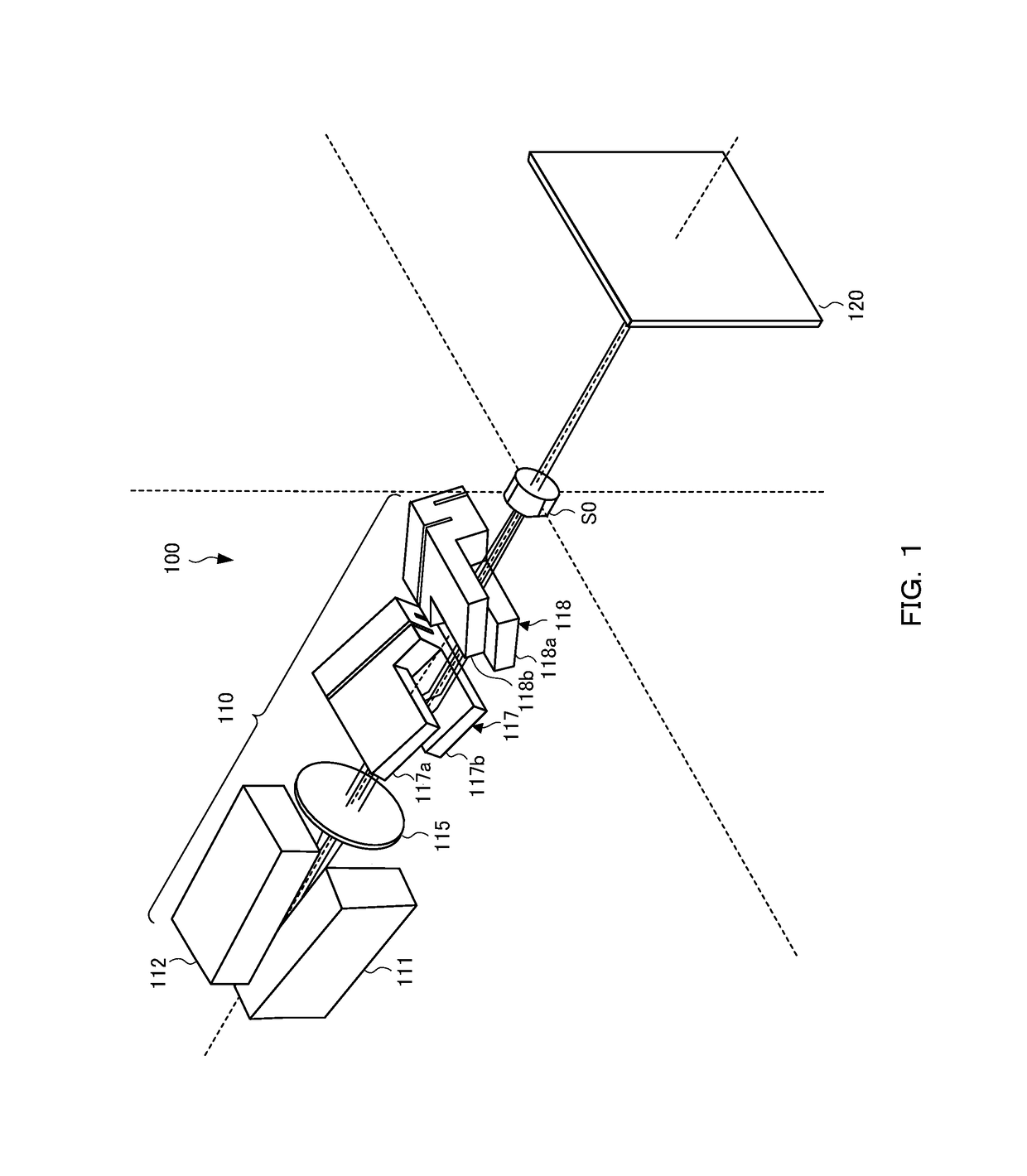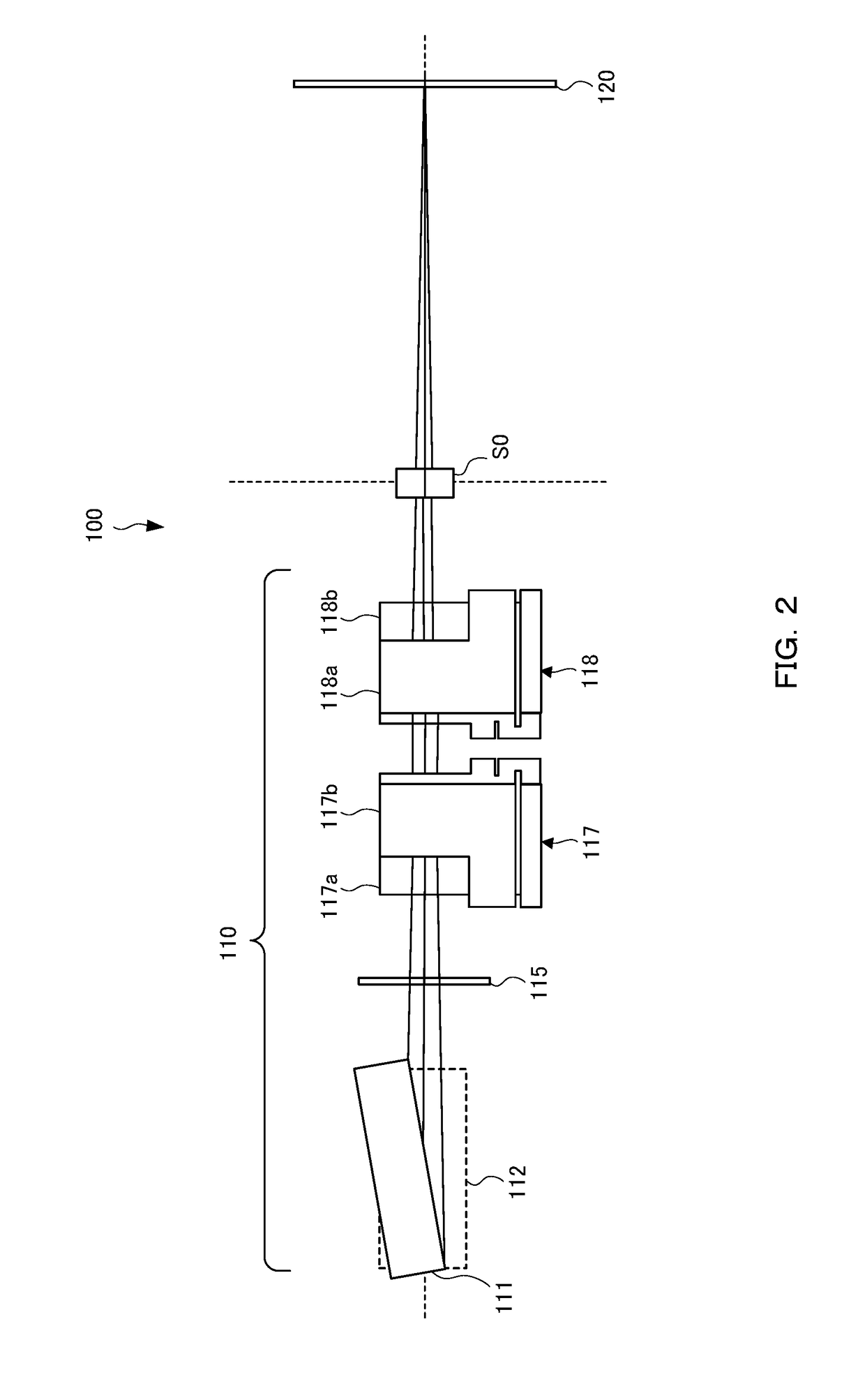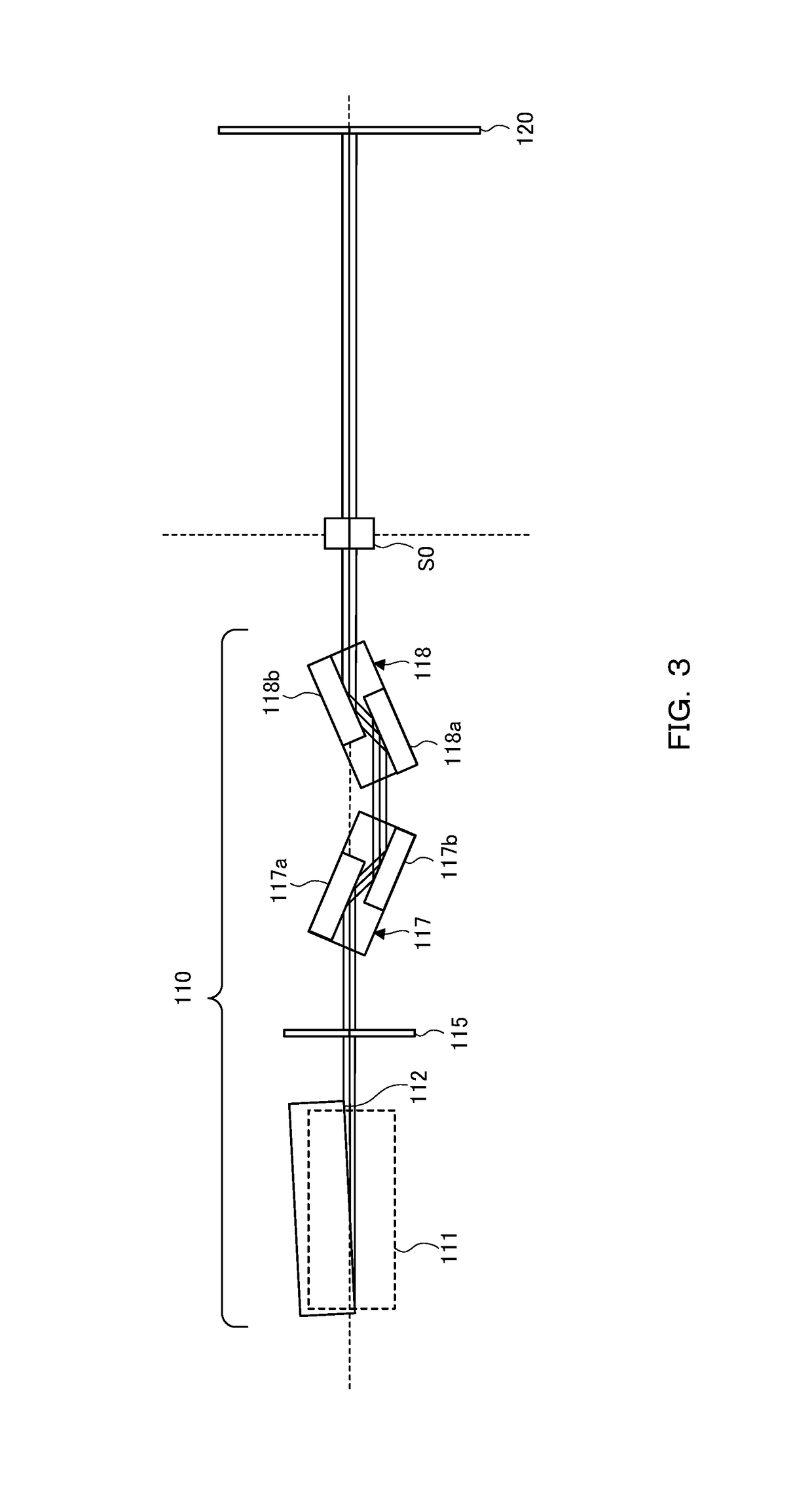Beam generation unit and X-ray small-angle scattering apparatus
a beam generation unit and x-ray technology, applied in material analysis using wave/particle radiation, instruments, nuclear engineering, etc., can solve the problem of large apparatus size, inability to simultaneously obtain anisotropic patterns by a one-dimensional detector, and the nature of x-ray to tend to diverge, etc., to achieve high signal-to-background ratio
- Summary
- Abstract
- Description
- Claims
- Application Information
AI Technical Summary
Benefits of technology
Problems solved by technology
Method used
Image
Examples
first embodiment
[0031][First Embodiment]
[0032](X-Ray Small-Angle Scattering Apparatus)
[0033]X-ray small-angle scattering is a method of analyzing the structure of a substance by measuring scattered X-rays whose scattering angle is small (normally, 10° or less) among scattered X-rays when the substance is irradiated with X-rays. If the wavelength of the X-ray is taken to be λ, the scattering angle is taken to be 2θ, from Bragg's law λ=2d sin θ, measuring scattered X-rays whose scattering angle is smaller corresponds to measuring a larger structure in the real space. Common sizes measured by the small-angle scattering are 1 to 100 nm, and therefore, it is possible to analyze a structure at the level of several nanometers, such as internal structures of a fine particle, a liquid crystal, and an alloy, by the small-angle scattering.
[0034]FIG. 1 to FIG. 3 are a perspective view, a side view, and a plan view, respectively, showing an outline of an X-ray small-angle scattering apparatus 100. As shown in F...
example)
[0077](Example)
[0078]Spectrum measurement of X-ray beams generated by the above-described beam generation unit (example) and by 4-crystal and 2-crystal beam generation units (comparative examples) was performed. FIGS. 4 (a) to 4 (d) are plan views each showing a configuration of beam generation unit. The distance from the X-ray source to the detection position is set to 750 mm in each configuration.
[0079]FIG. 4 (a) shows a configuration of a beam generation unit using a slit, in which two channel-cut monochromator crystals are arranged so as to be in the arrangement of (+, −, −, +) in the rear stage of the incident slit 115, 0.1 mm wide, and X-rays are collimated. As the X-ray source, the CuKα-rays are used, as the channel-cut monochromator crystal, the dispersive Ge crystal is used, and Ge (220) is used as the crystal plane (this also applies to the following comparative examples). The collimated X-rays are scanned and detected by a beam-receiving slit 130, 0.1 mm wide.
[0080]In pla...
PUM
| Property | Measurement | Unit |
|---|---|---|
| length | aaaaa | aaaaa |
| height | aaaaa | aaaaa |
| height | aaaaa | aaaaa |
Abstract
Description
Claims
Application Information
 Login to View More
Login to View More - R&D
- Intellectual Property
- Life Sciences
- Materials
- Tech Scout
- Unparalleled Data Quality
- Higher Quality Content
- 60% Fewer Hallucinations
Browse by: Latest US Patents, China's latest patents, Technical Efficacy Thesaurus, Application Domain, Technology Topic, Popular Technical Reports.
© 2025 PatSnap. All rights reserved.Legal|Privacy policy|Modern Slavery Act Transparency Statement|Sitemap|About US| Contact US: help@patsnap.com



